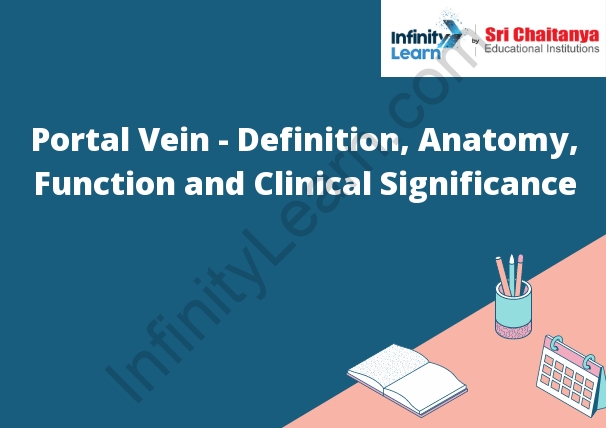Table of Contents
What is Portal Vein?
Definition of Portal Vein : The portal vein is a large vein that carries blood from the digestive organs (such as the stomach and small intestine) to the liver. The portal vein is the only vein that carries blood directly from the intestines to the liver.

Portal Vein Anatomy
The portal vein is a large vein that carries blood from the intestines, stomach, pancreas, and spleen to the liver. The portal vein branches into many smaller veins that carry the blood to the liver. The liver uses the blood to remove toxins and waste products from the blood. The portal vein is a large vein which drains blood from the gastrointestinal tract and carries it to the liver. It is formed by the union of the superior mesenteric vein and the splenic vein. The portal vein is about 10 cm long and 2.5 cm in diameter. It runs from the hilum of the liver to the hilus of the spleen. The portal vein has a number of tributaries, including the gastric, pancreatic, and hepatic veins. The portal vein is an important structure in the liver, as it is responsible for the delivery of blood to the liver for detoxification.
Venous Drainage of the Stomach
The stomach is drained by the portal vein and the hepatic veins. The portal vein carries blood from the small intestine, which contains the products of digestion, to the liver. The hepatic veins carry blood from the liver to the right atrium of the heart.
Portal Vein Function
- The portal vein is a large vein that carries blood from the intestine and spleen to the liver. The liver is a large organ that sits in the upper abdomen and filters toxins from the blood. The portal vein drains blood from the digestive tract and other organs in the abdomen and brings it to the liver. The liver then filters the blood and cleans it of toxins. The clean blood then flows through the hepatic veins and into the inferior vena cava. The inferior vena cava is a large vein that carries blood from the lower body to the heart.
- The portal vein is a large vein that carries blood from the intestine and spleen to the liver. The liver is a large organ that sits in the upper abdomen and filters toxins from the blood. The portal vein drains blood from the digestive tract and other organs in the abdomen and brings it to the liver.The inferior vena cava is a large vein that carries blood from the lower body to the heart.
Clinical Significance – Hepatic Portal Vein
- The hepatic portal vein is a vein that carries blood from the digestive organs to the liver. It is the largest vein in the body and it is made up of several different veins that merge together. The hepatic portal vein is important because it helps to remove toxins from the blood and it helps to regulate the blood sugar levels.
- The hepatic portal vein is a significant vein because it carries blood from the digestive organs to the liver. The blood in the hepatic portal vein is rich in nutrients because it has been filtered by the liver. The liver also removes toxins from the blood before it enters the general circulation. The hepatic portal vein is important for maintaining the health of the liver.
Difference Between Hepatic Vein and Portal Vein
- The hepatic vein carries oxygenated blood from the liver to the heart .
- The portal veins carries blood from the intestines and other organs to the liver.
- The hepatic vein is larger than the portal vein and has a more direct route to the heart
- The hepatic vein is a large vein that carries blood from the liver to the heart. The portal vein is a large vein that carries blood from the small intestine, spleen, and pancreas to the liver. The hepatic vein and the portal vein are different in several ways.
- The hepatic vein is smaller than the portal vein. It carries blood that is rich in nutrients and oxygen. The portal vein carries blood that is rich in nutrients, oxygen, and hormones. The hepatic vein is a direct route to the heart. The portal vein is a direct route to the liver.
- The hepatic vein and the portal vein have different functions. The hepatic vein carries blood from the liver to the heart. The portal vein carries blood from the small intestine, spleen, and pancreas to the liver. Both the vein are different in size, function, and route.
- Both vein are two veins in the body that have different functions. The hepatic vein carries oxygen-rich blood from the liver to the heart, while the portal vein carries blood from the intestines to the liver. The hepatic vein is larger than the portal vein and is located on the right side of the body. The portal vein is located on the left side of the body.









